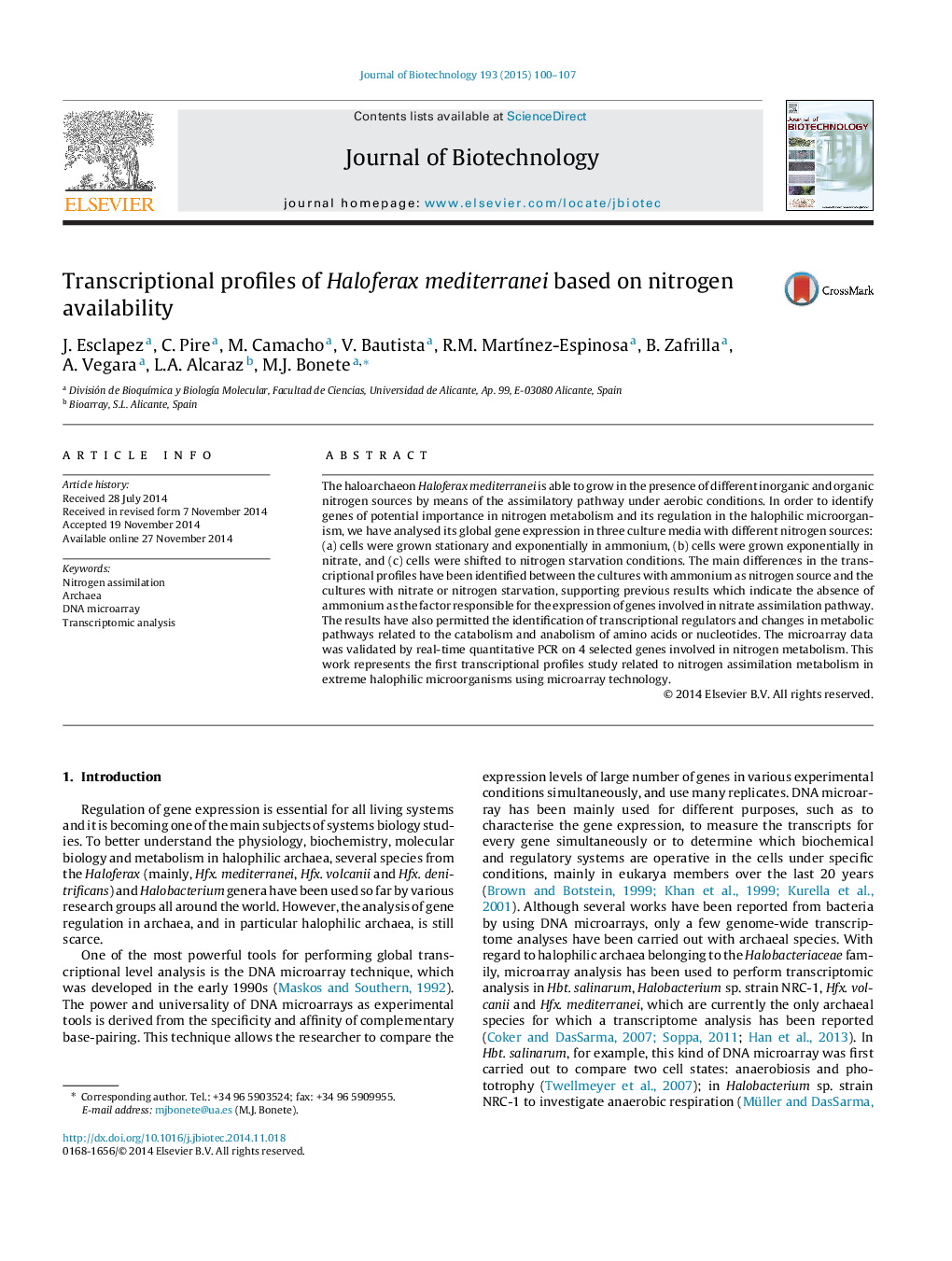| Article ID | Journal | Published Year | Pages | File Type |
|---|---|---|---|---|
| 22968 | Journal of Biotechnology | 2015 | 8 Pages |
•Nitrogen assimilation metabolism has been studied using microarray technology.•The absence of ammonium is the main signal to induce nitrogen assimilation.•Transcriptional level of N-compounds has decreased in N limiting conditions.•It has been identified different transcriptional regulators.•The dependence of transcription changes has been validated by qRT-PCR.
The haloarchaeon Haloferax mediterranei is able to grow in the presence of different inorganic and organic nitrogen sources by means of the assimilatory pathway under aerobic conditions. In order to identify genes of potential importance in nitrogen metabolism and its regulation in the halophilic microorganism, we have analysed its global gene expression in three culture media with different nitrogen sources: (a) cells were grown stationary and exponentially in ammonium, (b) cells were grown exponentially in nitrate, and (c) cells were shifted to nitrogen starvation conditions. The main differences in the transcriptional profiles have been identified between the cultures with ammonium as nitrogen source and the cultures with nitrate or nitrogen starvation, supporting previous results which indicate the absence of ammonium as the factor responsible for the expression of genes involved in nitrate assimilation pathway. The results have also permitted the identification of transcriptional regulators and changes in metabolic pathways related to the catabolism and anabolism of amino acids or nucleotides. The microarray data was validated by real-time quantitative PCR on 4 selected genes involved in nitrogen metabolism. This work represents the first transcriptional profiles study related to nitrogen assimilation metabolism in extreme halophilic microorganisms using microarray technology.
